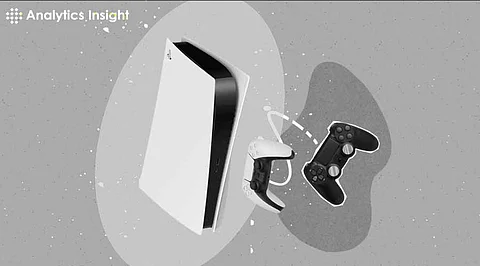

Sony's entry into the gaming market in the mid-1990s marked the beginning of a revolution. With the release of the original PlayStation in 1994, the company set the stage for a legacy of innovation that would transform the gaming industry. Over the years, each successive console iteration - from the PlayStation 2's DVD capabilities to the PlayStation 4's online gaming features and the latest PlayStation 5's cutting-edge hardware - has pushed the boundaries of gaming technology.
Read on to know the most significant developments and milestones that have shaped the history of PlayStation consoles, highlighting the company's commitment to innovation and its enduring impact on the gaming world.
Launched on December 3, 1994, the original PlayStation marked Sony's bold entry into the gaming industry. By leveraging 3D graphics capabilities and CD-ROM technology, the PS1 revolutionized game development and player experiences, setting a new standard for immersive gaming. With its 32-bit RISC CPU and 2MB of RAM, the PS1 delivered smooth, high-quality 3D graphics, captivating gamers and developers alike.
Transition to Disc-Based Gaming: The transition from cartridges to CDs allowed for greater storage capacity, enabling the development of more complex and interactive games.
3D Revolution: The introduction of polygons with the PlayStation 1 (PS1) provided a new level of visual authenticity in video gaming.
Iconic Titles: This console has produced legendary titles, including Final Fantasy VII, Resident Evil, and Metal Gear Solid, solidifying Sony's position as a leading force in the gaming industry.
With over 102 million units sold, the PS1 became one of the best-selling consoles of its time and laid a strong foundation for future PlayStation systems.
The PlayStation 2 (PS2) was launched on March 4, 2000. It built upon the foundation laid by its predecessor and went on to become the best-selling video game console in history, with over 159 million units sold.
DVD Playback: The PS2 was not just a gaming console; it also played DVDs, making it a versatile device for entertainment.
Backward Compatibility: The PS2 supported a vast library of PlayStation 1 games, allowing players to enjoy their favorite titles from the previous generation.
Iconic Game Series: The console hosted legendary franchises such as Grand Theft Auto, God of War, and Kingdom Hearts, solidifying its status in gaming history.
PS2 Slim: In 2004, the PS2 Slim was released as a thinner version of the original console, offering improved performance and a sleeker design.
High-definition gaming entered a new era with the release of the PlayStation 3 on November 11, 2006. This console showcased several technological advancements.
1. Blu-ray Technology: The PS3 was the first gaming console to utilize Blu-ray discs for storage, providing players with increased storage capacity for games and enhanced multimedia capabilities.
2. PlayStation Network (PSN): This online service supports digital downloads, multiplayer gaming, and a variety of other media services.
3. Strong Exclusives: The PS3 boasted critically acclaimed titles such as Uncharted, The Last of Us, and LittleBigPlanet, demonstrating its strong hardware capabilities.
Despite facing challenges with its pricing and competition from Microsoft's Xbox 360, the PS3 managed to find its place in the gaming market.
The PlayStation 4, abbreviated as PS4, was released on November 15, 2013. It has grown to become one of the best-selling gaming consoles ever, thanks to its powerful hardware and user-friendly features.
Powerful Hardware: The PS4 is equipped with impressive graphics capabilities and smooth performance, providing an exceptional gaming experience.
Social Shareability: The console emphasizes sharing by offering easy streaming of gameplay and seamless connections with friends.
Acclaimed Exclusives: The PS4 features several exclusive titles that have received numerous awards, including God of War, Bloodborne, and Horizon Zero Dawn.
With sales surpassing 116 million units, the PS4 established itself as the leading console in its generation.
The PlayStation 5, or PS5, was released on November 12, 2020, and represents a significant advancement in gaming technology and design.
Ultra-Fast SSD: The PS5 is equipped with a custom solid-state drive (SSD) that dramatically reduces load times, resulting in a smoother gaming experience.
DualSense Controller: This new controller features haptic feedback and adaptive triggers, making gaming more immersive than ever.
Backward Compatibility: Most PS4 games are playable on the PS5, allowing users to continue enjoying their favorite titles from the previous generation.
Consumers can choose between two models: the disc version and the digital version. Sony has successfully catered to consumer preferences, which has contributed to the PS5’s rapid rise in the market, with no reported supply chain issues to date.
The evolution of PlayStation consoles, from the pioneering PS1 to the cutting-edge PS5, is a testament to Sony's unwavering commitment to innovation and excellence in gaming. Each successive generation has introduced groundbreaking technologies, elevating the gaming experience and redefining the boundaries of interactive entertainment.
As the gaming industry sees dramatic growth, it's exciting to anticipate how Sony's future innovations will shape the market, offering new possibilities and immersive experiences that will captivate gamers worldwide.
